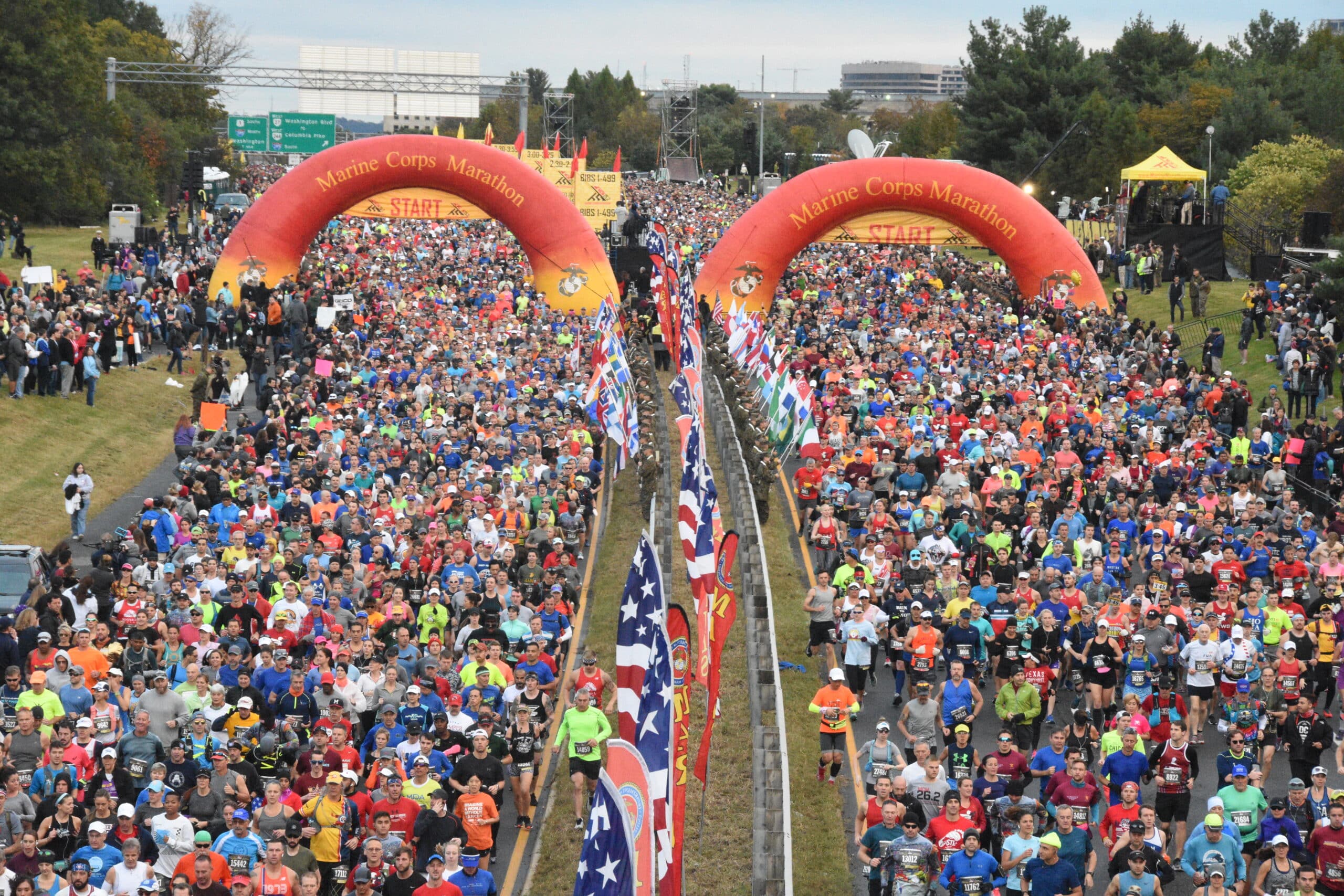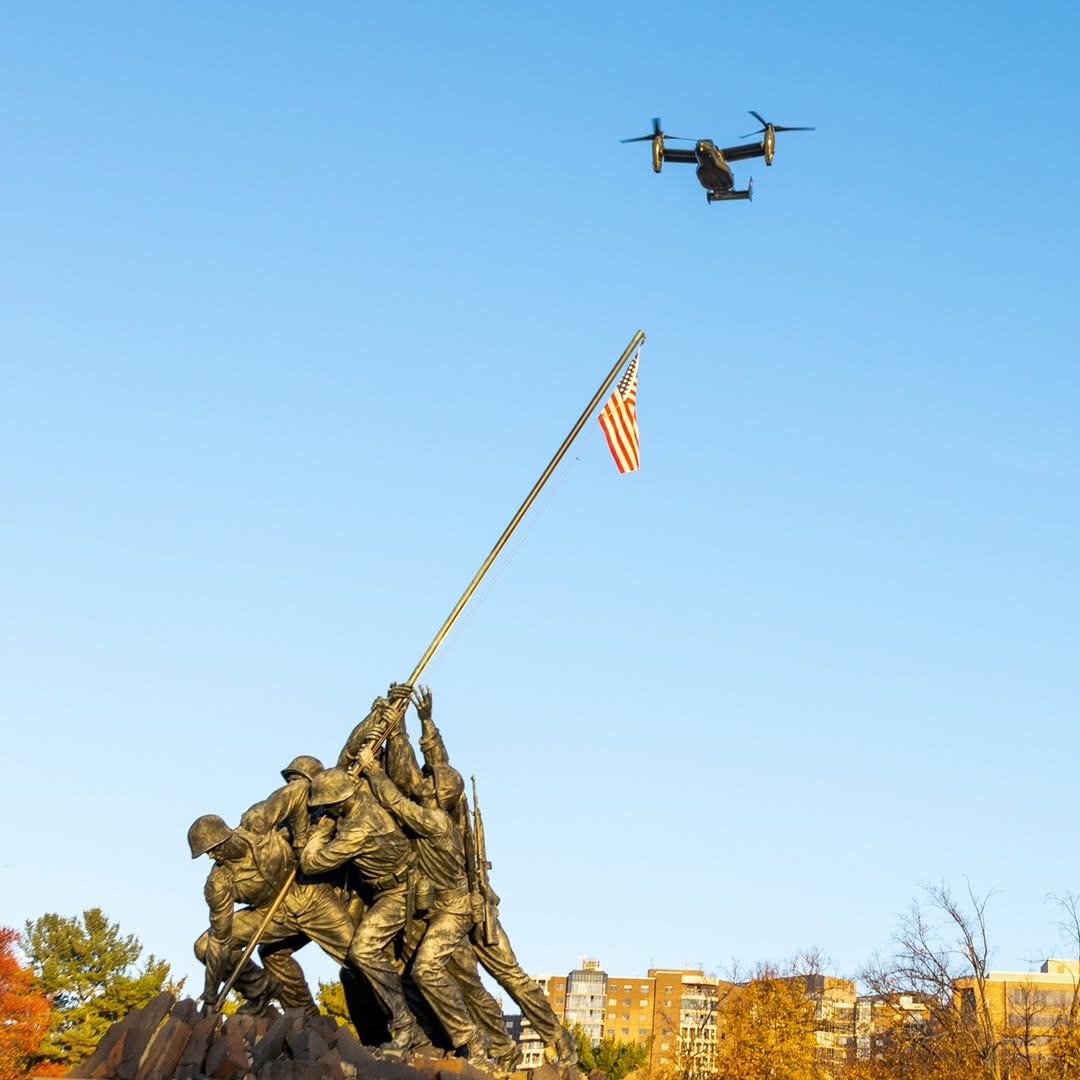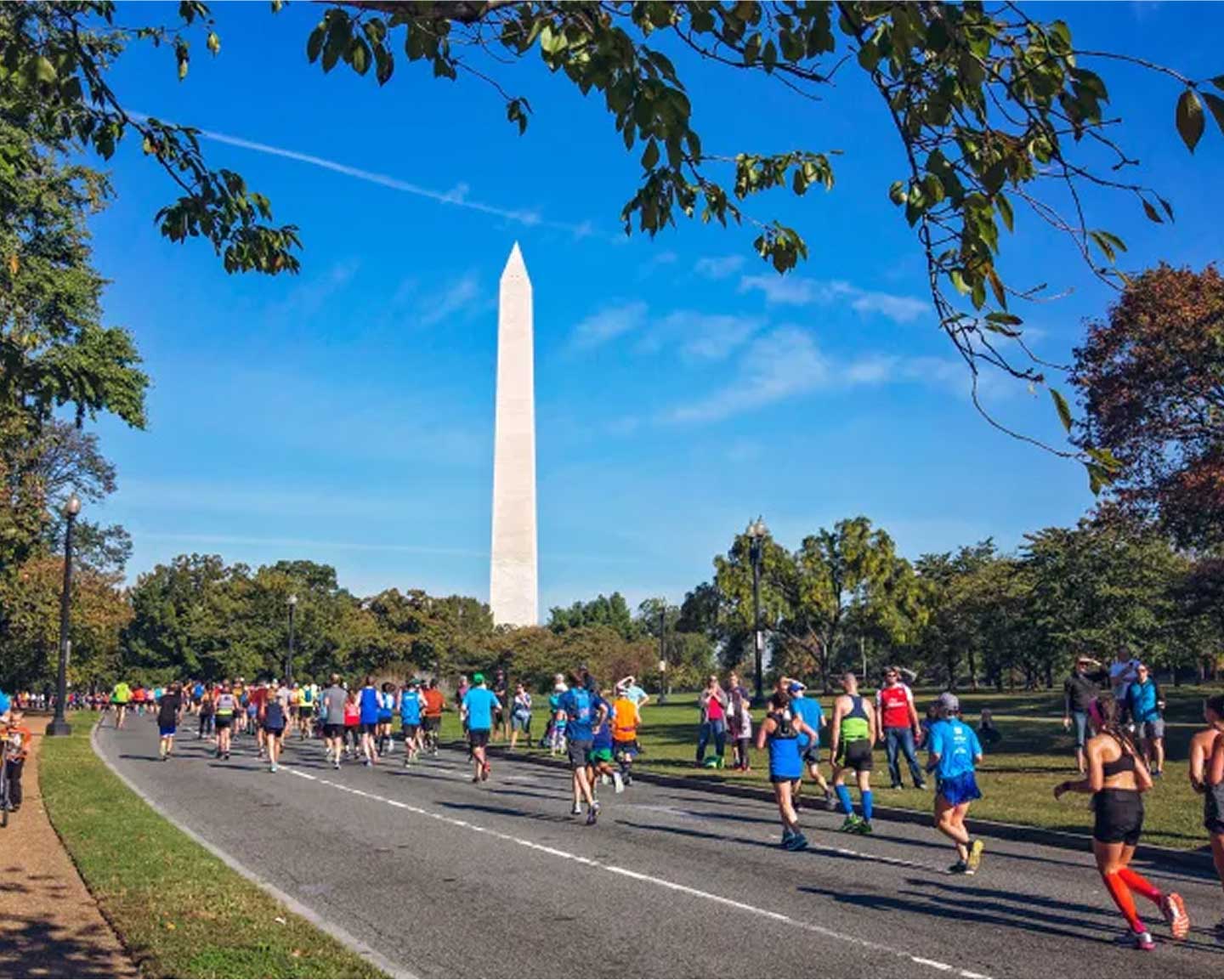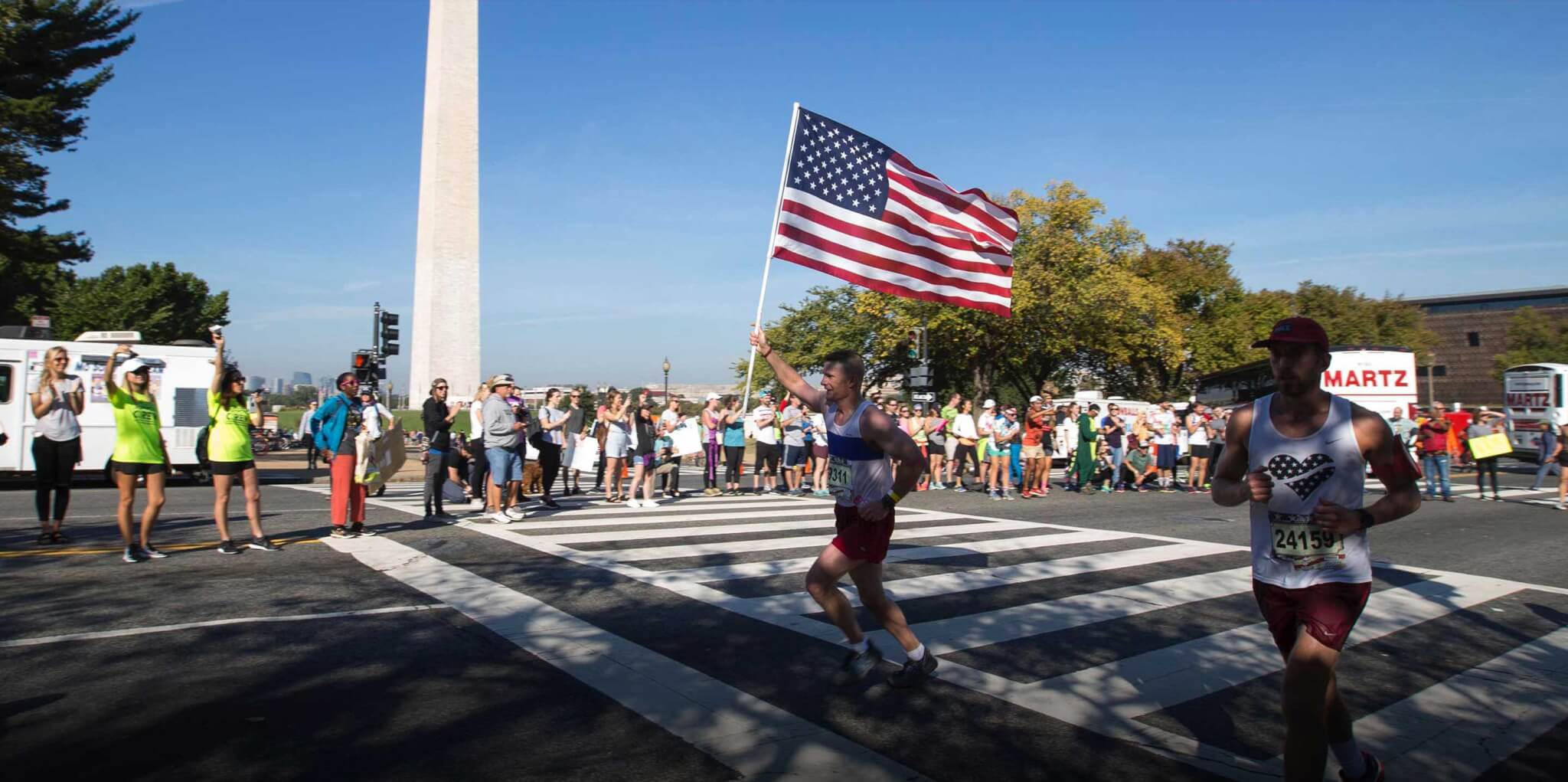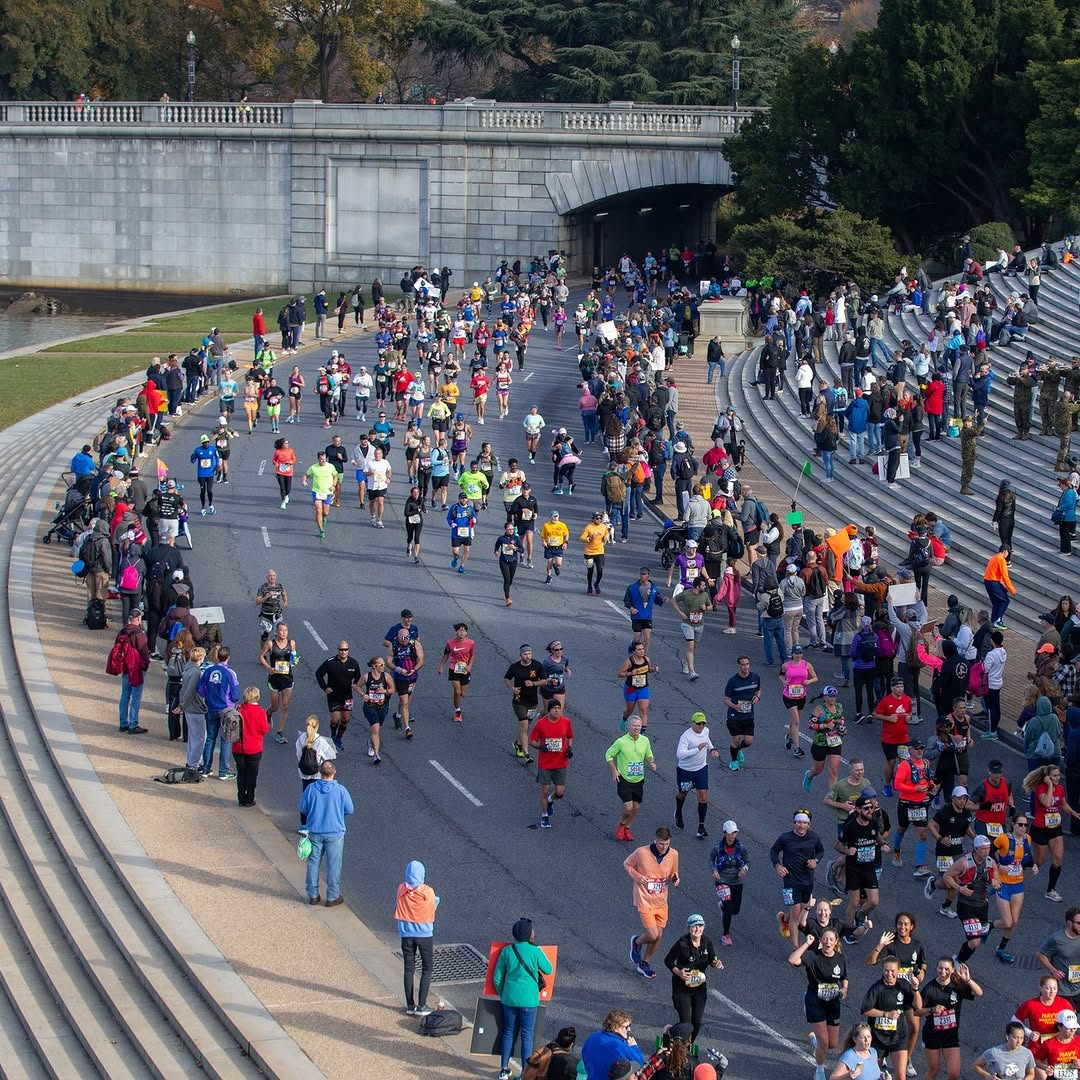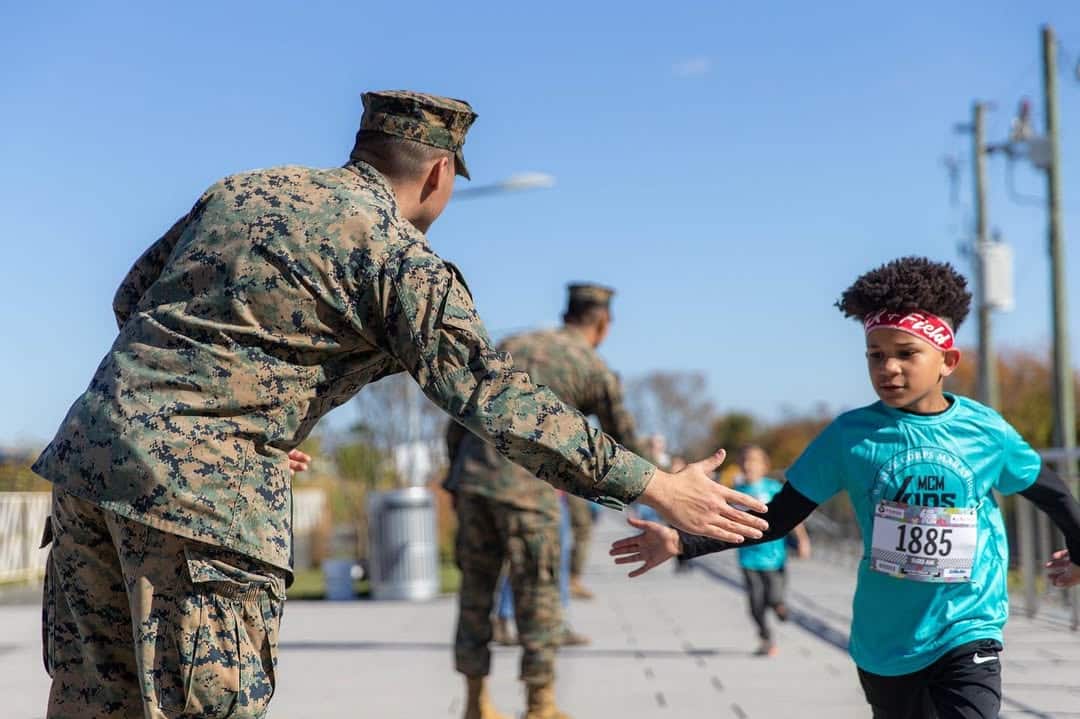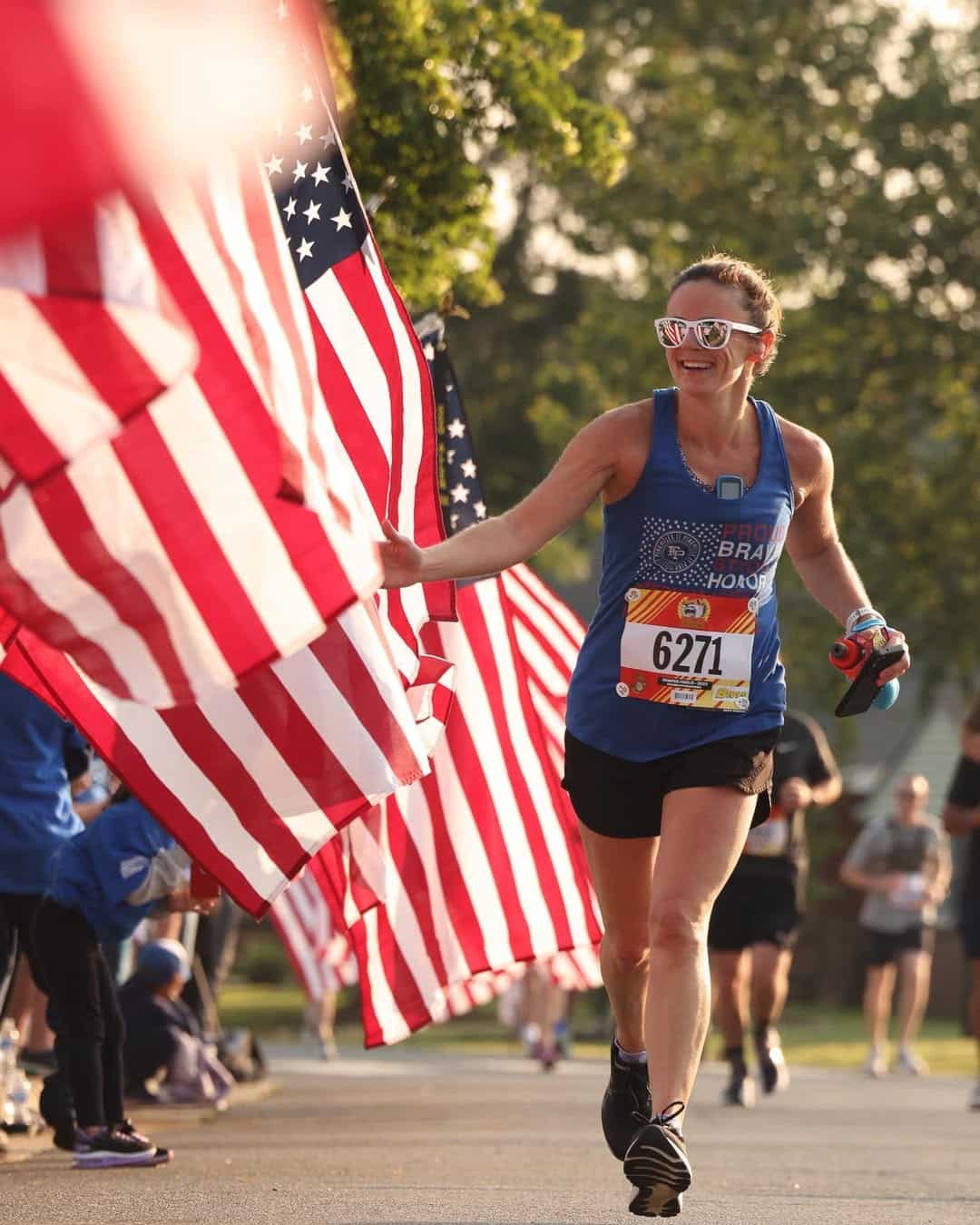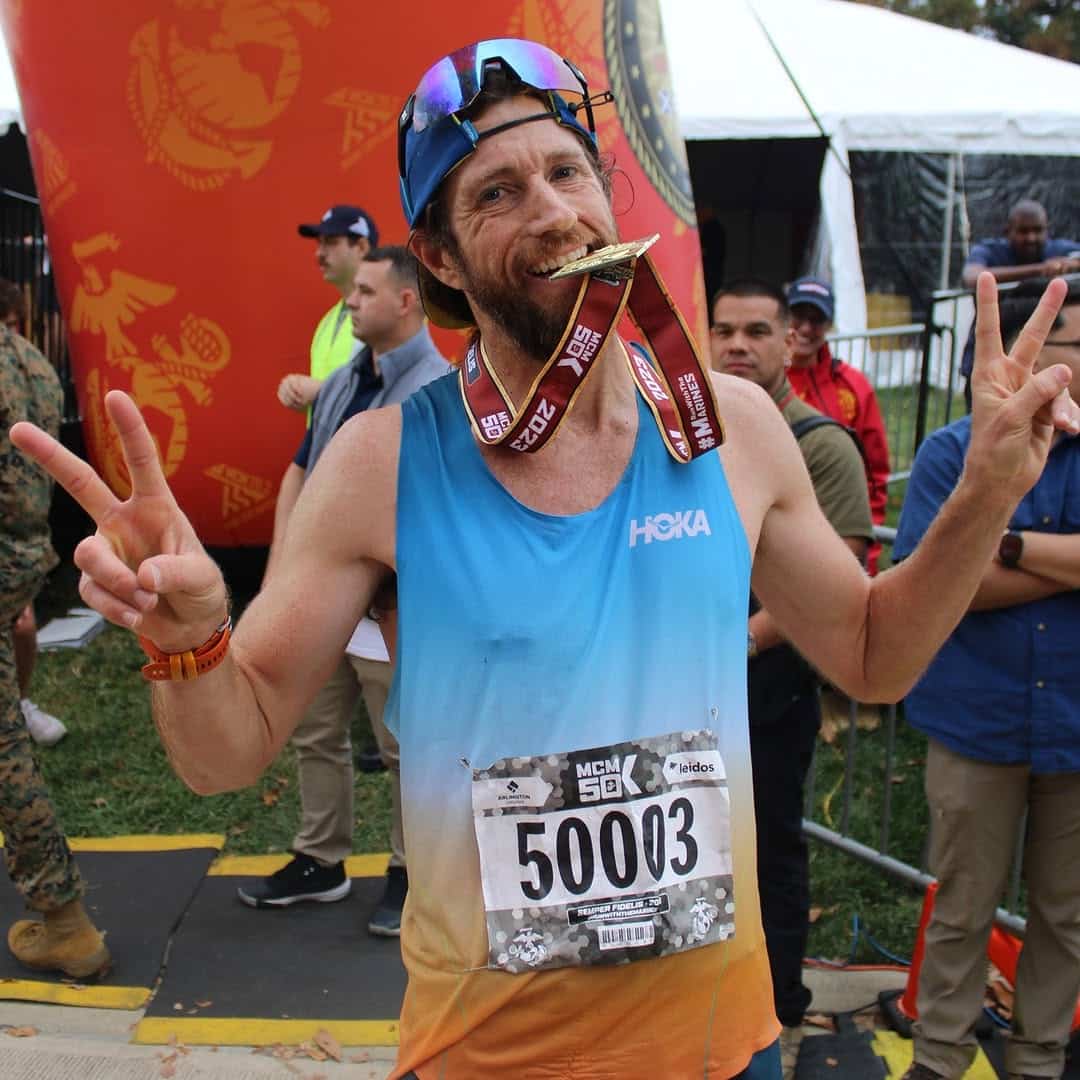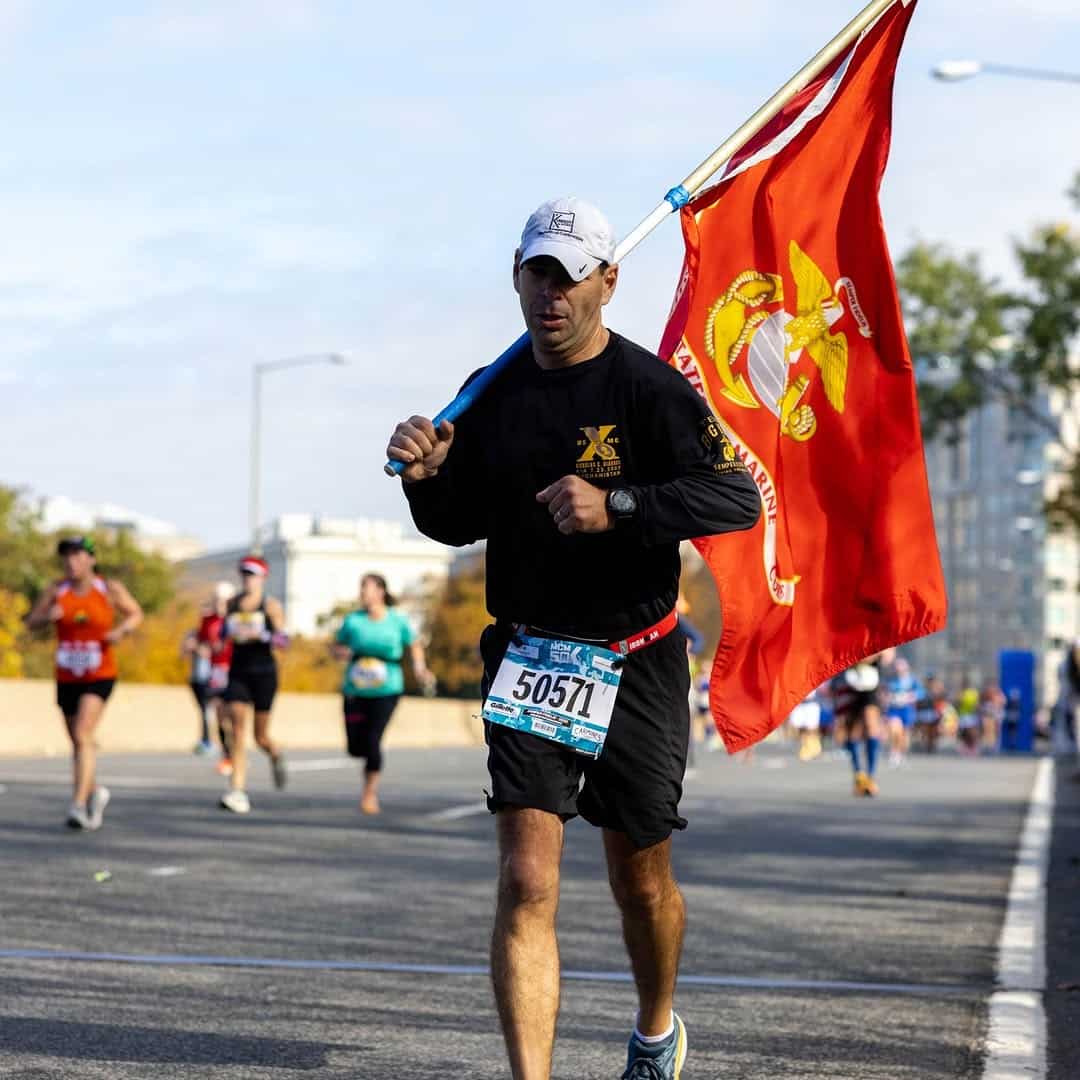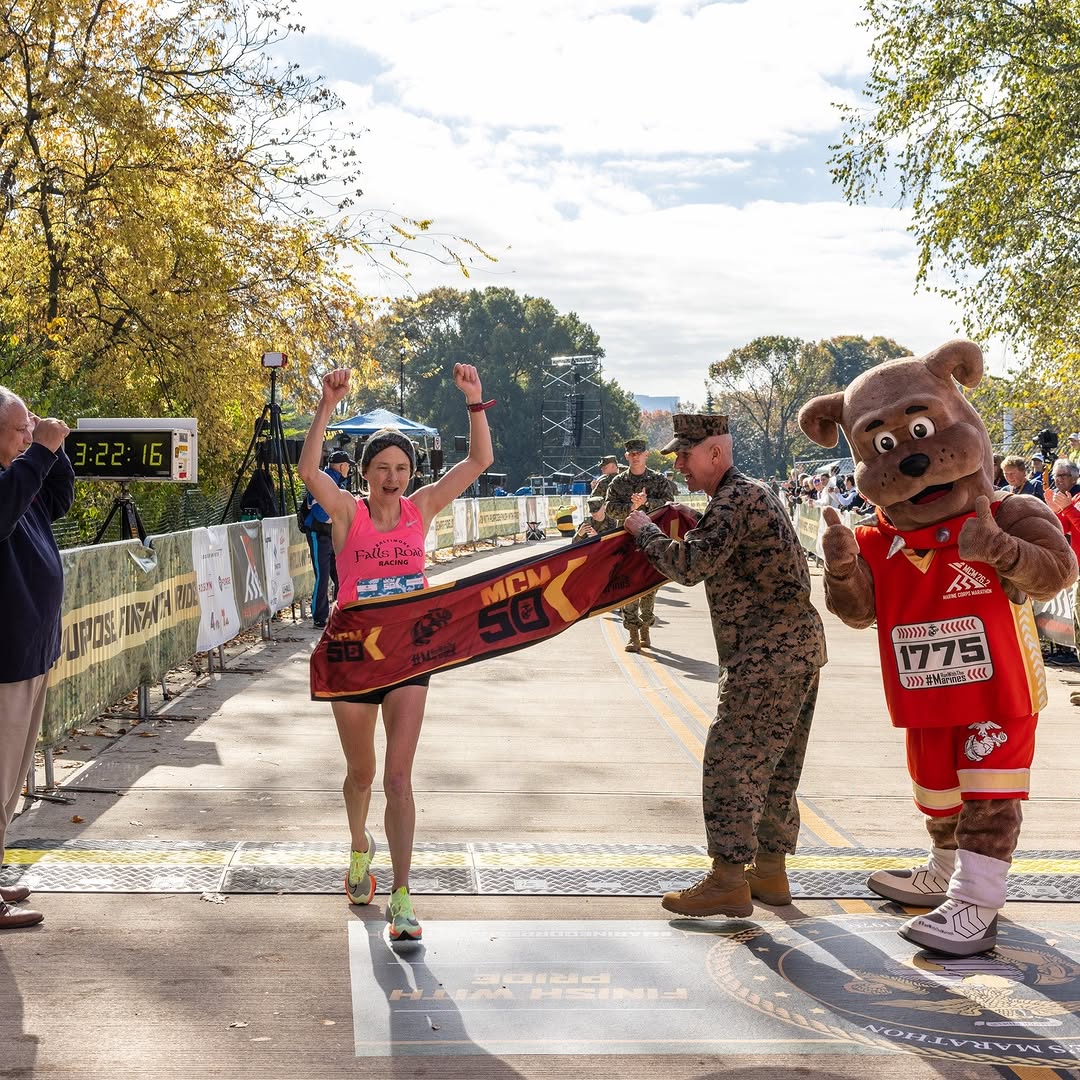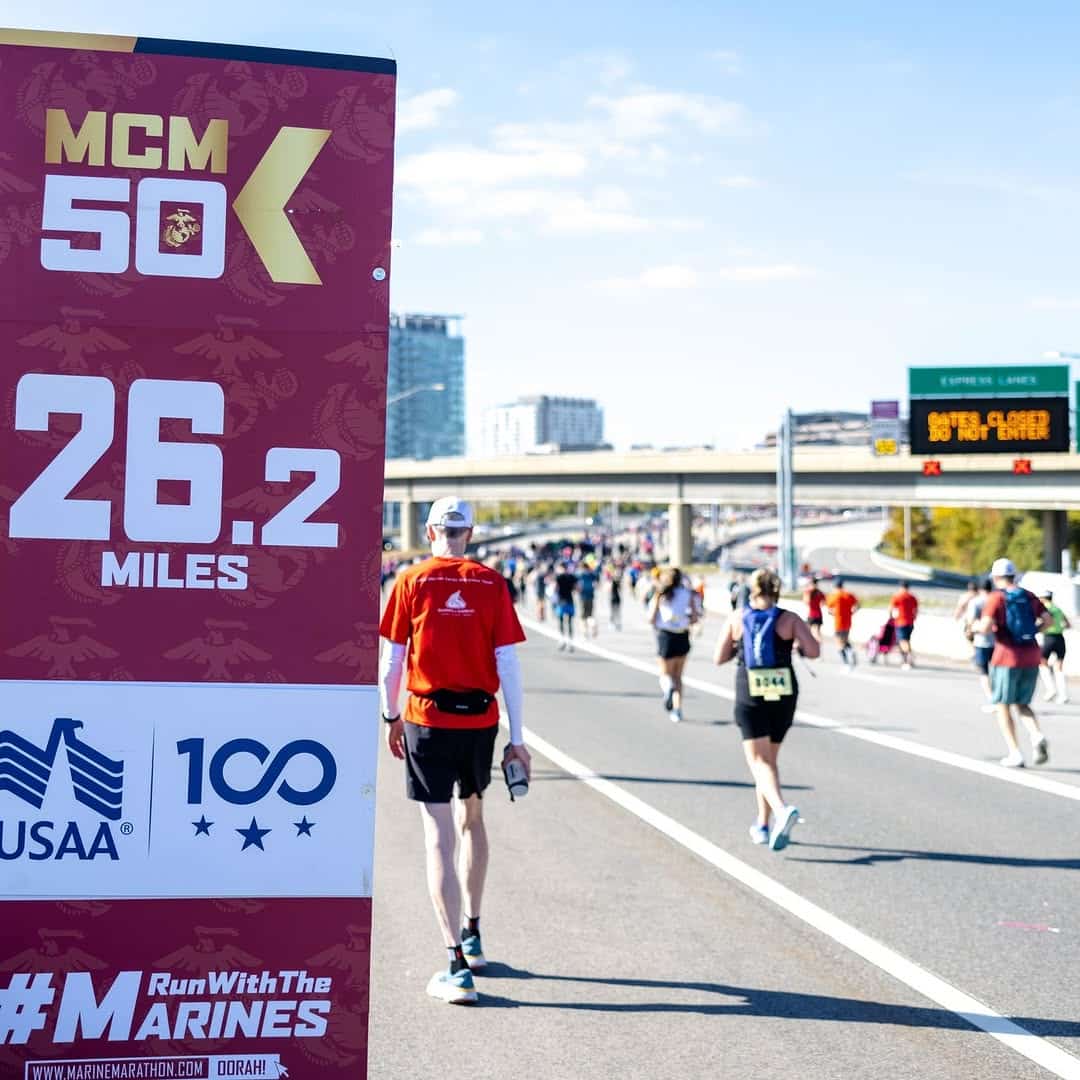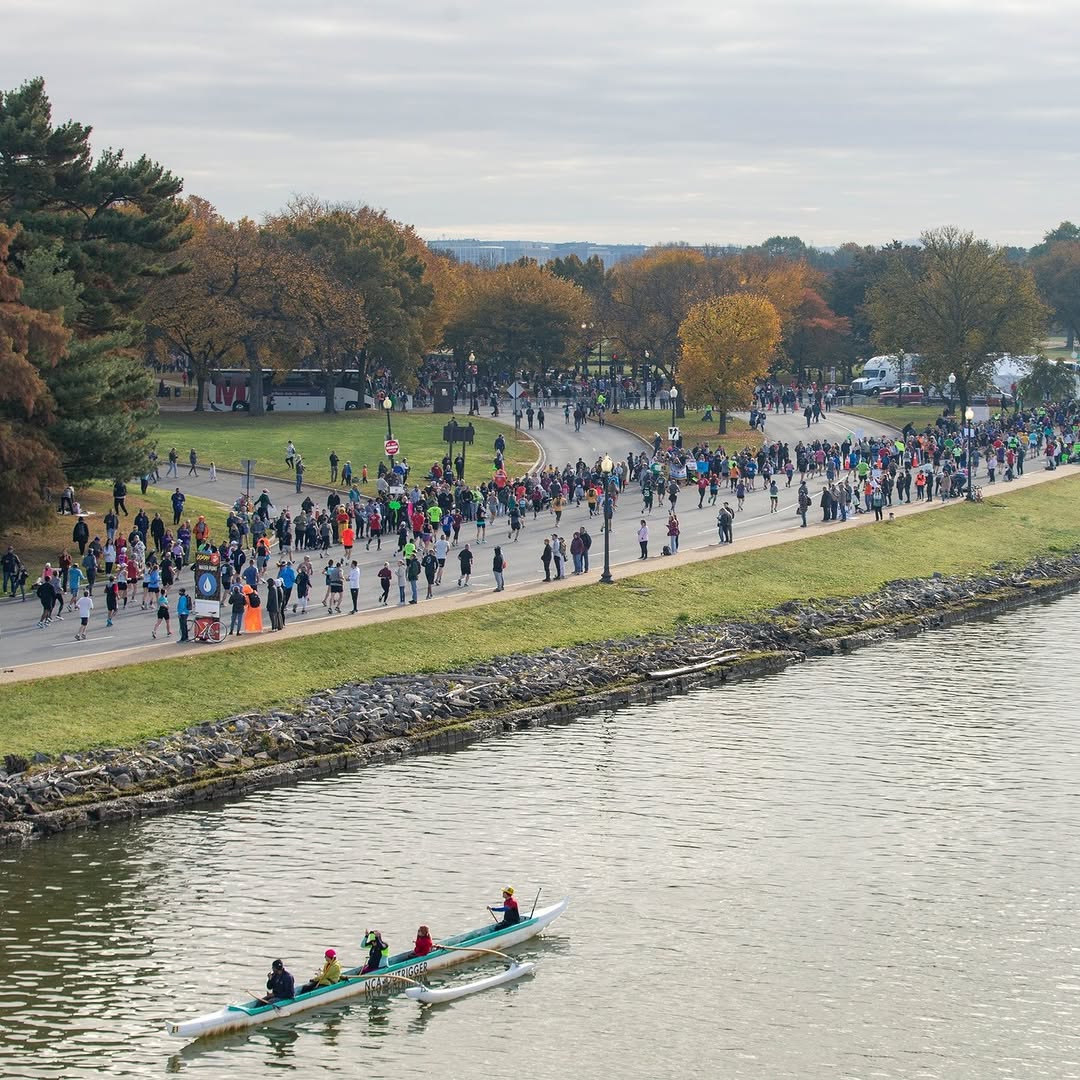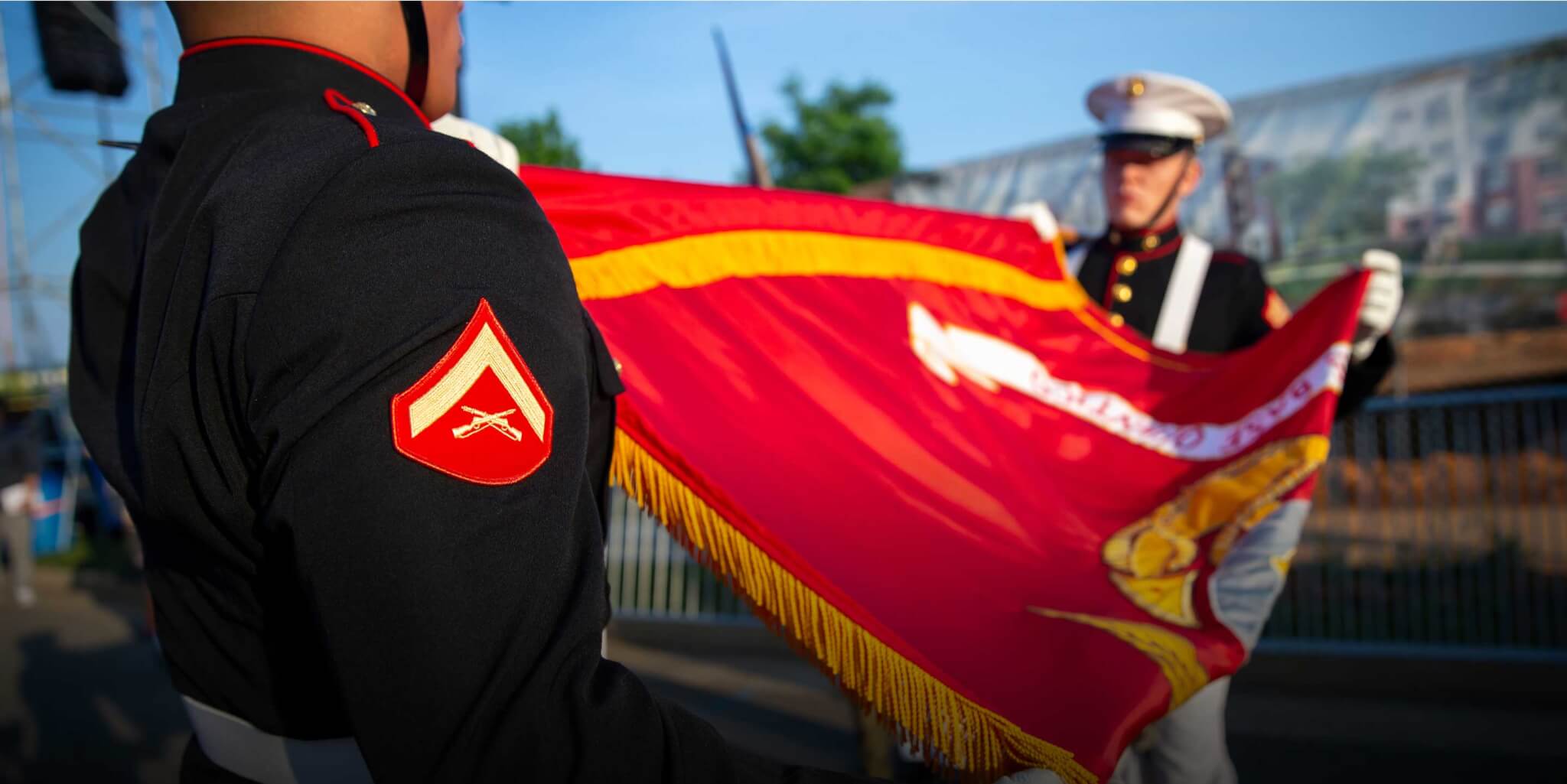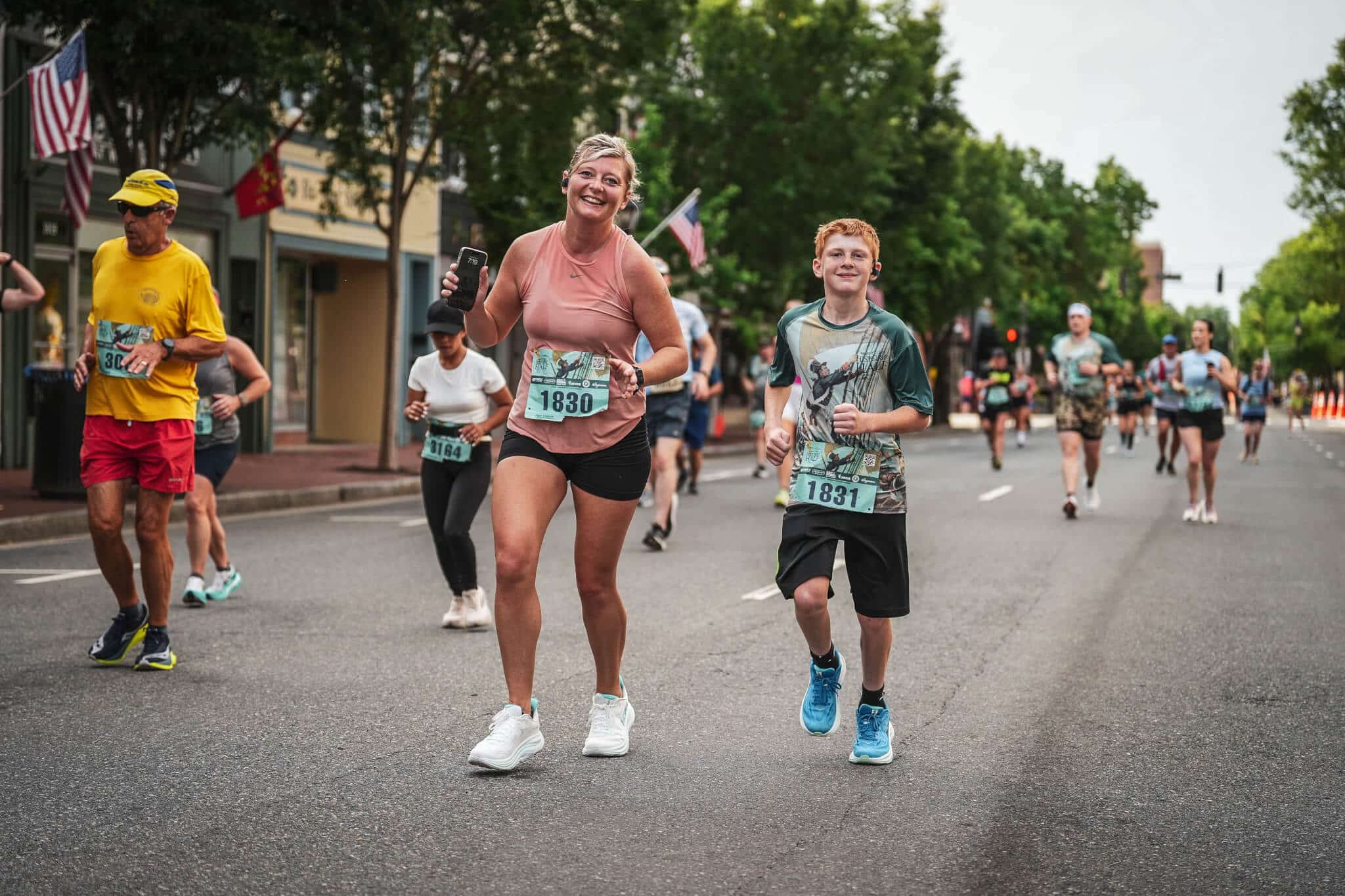Marine Corps Marathon : more than just a race, a human experience driven by the spirit of the Marines
25/10/2025 14:55Every last Sunday of October in Washington D.C., for nearly 50 years, the Marine Corps Marathon has brought together over 30,000 runners in a unique atmosphere that blends a spirit of service, tradition, and popular enthusiasm. Organized by the Marines since 1976, this marathon winds through iconic landmarks like the Lincoln Memorial, the Capitol, and the Pentagon, honoring the core values of the Marine Corps: Honor, courage, and commitment. As it approaches its 50th anniversary this fall, Alex Hetherington, the Race Director and a former Marine helicopter pilot, gave us a behind-the-scenes look at this extraordinary event. He shares his deep connection to the course, his personal running journey, and explains how the marathon is evolving to meet today’s challenges : inclusion, environmental impact, and preserving the military legacy. The Marine Corps Marathon is more than just a race, it’s a living tribute to those who serve, and a celebration of the bond between civilians and military alike.
➜ Just a few months before the 2025 edition of the Marine Corps Marathon, which will celebrate its 50th anniversary, we had the privilege of going behind the scenes of its organization.
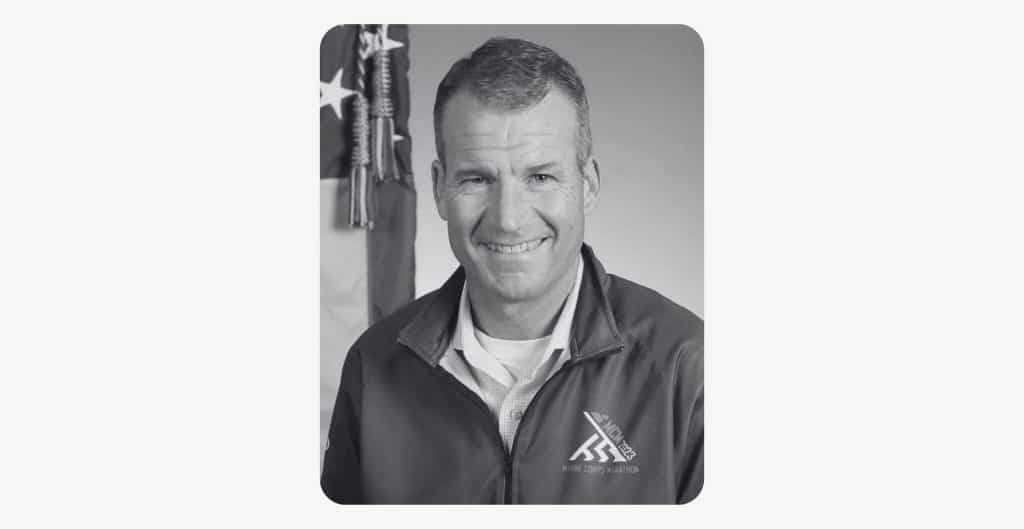
Behind the scenes of this marathon with a military heritage : an interview with Alex Hetherington, former Marine and current Director of the Marine Corps Marathon organization.
| Could you give us an overview of how the marathon is organized, describe your role in the event, and tell us how long you’ve been involved with it?
Alex Hetherington: The Marine Corps Marathon organization directly represents the United States Marine Corps. It’s a public outreach entity designed to convey themes and messages about the Corps’ traditions, values, culture, and service to the United States. The Marine Corps gives us a mission to promote physical fitness, demonstrate Marine Corps organizational skills, and conduct public outreach.
We currently hold five event weekends a year, most of them in Northern Virginia. Not long ago (on May 18, 2025), we hosted our Historic Half Marathon in Fredericksburg, Virginia — a significant, historic town in Northern Virginia. We’re proud of that.
This year is the 50th running of the Marine Corps Marathon. My role is to organize the events and make sure they appropriately represent the Marine Corps. Aside from my family, the constant theme in my life has been the Marine Corps. I spent my professional life with the Corps — first on active duty and now as a veteran — supporting the mission as a civilian.
I’ve also been a lifelong runner. I was never truly an elite athlete, but I’ve always been invested in running, and that’s what tied me to the Marine Corps Marathon. I love the marathon distance. I competed on All-Marine running teams against other U.S. Armed Forces branches. A special competition was always the Challenge Cup, part of the Marine Corps Marathon, between the United States Marine Corps and the Royal Navy and Royal Marines from the UK. That tradition has been part of the race since 1978. That’s how I got connected — and how I arrived where I am now.
✓ The Marine Corps Marathon is a unique race. With its exceptional course, the spirit of the Marine Corps that drives it, its accessibility, inclusivity, and focus on the runner’s experience, it stands out on the international stage.
| What makes this marathon so unique in the world?
Alex Hetherington: There are three things that make the Marine Corps Marathon unique. First, it’s a major race, professionally organized, in an iconic setting, and affiliated with the Marine Corps. Our mission is to provide the best possible runner experience for everyone. Whether you’re an elite athlete or trying to finish within the time limit, we want you to have the opportunity to meet your goal.
Second, we want to celebrate and recognize strong performances across all groups. We value our adaptive athletes and take pride in supporting them.
Third, it’s the largest endurance event that does not offer prize money. That’s why we’re known as the “People’s Marathon.” We focus all our resources on the runner experience. We want you to get out and run, to perform — that’s opportunity and respect for your goals. And then recognition: we want to celebrate you. The Marine Corps Marathon medal is iconic and representative of the Corps, and it’s presented at the finish line by a Marine.
✓ The Marine Corps Marathon is known as the « People’s Marathon » because no prize money is at stake. Winning this race is above all an honor, to triumph in a prestigious event and to stand atop the podium, where a former Marine presents the medal.
| Could you explain more about the philosophy behind this unique position as the “People’s Marathon”?
Alex Hetherington: It really comes down to the culture and values of the Marine Corps. To be a Marine, you have to meet the standard — mental, moral, and physical. Running a marathon is very difficult. It’s a challenge, a high bar, an extreme goal that requires consistent training.
As Marines, we don’t distinguish between Marines — we celebrate everyone in the same way. We present awards publicly, with dignity, but they’re not monetary; they’re recognition among your peers.
If you win the Marine Corps Marathon, that’s attached to you for life — but we’re not going to pay you for it. We don’t cater to a pure elite field, but it’s a big stage for strong runners who want to come and win. Some elite athletes who’ve won our event have told me years later that, despite the prize money they earned elsewhere, the thing people remember them best for is winning the Marine Corps Marathon. That, to me, is the ultimate compliment.
✓ The history of the Marine Corps Marathon is incredibly fascinating, yet surprisingly little known to the general public. It was created to foster a positive connection between the public and the military, especially the Marine Corps. Since then, the marathon has continuously brought together active-duty service members, veterans, and their families, creating a strong and meaningful community.
| Let’s go back in time to the year of its creation, in 1975. Could you explain why the Marines decided to create such an event at that time?
Alex Hetherington: The idea came from Colonel Jim Fowler, a combat-decorated and wounded veteran of the Vietnam War. In 1975, while serving in the Pentagon as a reserve Marine, he wrote a point paper to the Secretary of the Navy and the Commandant, advocating for a “Marine Corps Reserve Marathon,” which was the original title.
He felt the American public was losing trust in the armed forces — in the Department of Defense — because of things that happened during the Vietnam War. He wanted to create something civilians could participate in, a celebration of service that would allow positive engagement with the Marine Corps and help people reconnect as civilians.
The timing was interesting. In 1972, Frank Shorter won the Munich Olympic Marathon, and running took off in popularity. Marathons were starting to boom. The New York City Marathon was gaining traction, and of course Boston had been around a long time, with rapidly expanding participation.
It was a unique, creative, and groundbreaking idea for the time. I think the Marine Corps was lukewarm initially, but the Secretary of the Navy — Ambassador Middendorf — was a runner, and the idea captured his imagination. He strongly advocated for the Corps to do it. Within a year of that point paper in 1975, the first Marine Corps Marathon was held in 1976. That showed a lot of ingenuity and determination to launch it so quickly.
| The marathon passes by symbolic locations — the Pentagon, the National Mall, the Lincoln Memorial, the Jefferson Memorial, the Capitol as well. Has the course remained the same over the years, or has it evolved recently? Additionally, what is it like to organize a marathon through such symbolic locations? Is it an easy task, or rather a complex one?
Alex Hetherington: The challenge is that we’re in Arlington, Virginia, and Washington, D.C., and about 70–75% of the course runs on National Park Service property. We’re on Pentagon property and other Department of Defense property as well. We also coordinate with the Capitol Police because we get close to the Capitol. So we touch an incredible number of jurisdictions, especially law enforcement and emergency management. Getting everyone aligned is the most difficult piece.
And in Washington, D.C. — especially in such an iconic area for our nation’s capital and really the world — there are constant public works and improvement projects. Right now, there’s a major project in West Potomac Park, adjacent to the Lincoln Memorial, which forced us to change the course last year and will likely affect us for the next five or six years.
Over time, the course has evolved. The first Marine Corps Marathon happened entirely in Northern Virginia. In the late 1970s, we expanded into D.C. For the previous decade plus, the course was stable. The modification we made last year allowed us to add two more memorials — the Martin Luther King Jr. Memorial and the Franklin Delano Roosevelt Memorial. It added a couple of turns, which isn’t ideal, but it lets us pass two more memorials. There are always trade-offs — pluses and minuses. We really like our course and think it’s about the best you can have.
✓ It’s rare for a marathon of this scale to rely solely on the passion of its runners, their registration fees, and a limited number of partners for funding. This way of sustaining itself is directly tied to the unique status of the Marine Corps Marathon.
| You have a unique position as an organizer. This race is different, especially because of the runners, but you also depend on the U.S. government. That means decisions, funding, and organization are handled differently. Could you explain how your operation works?
Alex Hetherington: The Marine Corps Marathon Organization is a non-appropriated fund (NAF) government activity. In simple terms, we operate similarly to a nonprofit organization, but we are officially part of the U.S. government. As a NAF activity, we do not receive any taxpayer funding — no congressionally appropriated funds support our operations. Instead, we are entirely self-funded. All of our activities, staff, and events are supported by the revenue we generate through registration fees and sponsorships. This is how we’re able to plan and execute our races. Our entire team consists of non-appropriated fund employees, meaning we are federal employees whose compensation and benefits align with government pay bands, but are funded exclusively through the income produced by our events.
Other branches of the military have similar events, organized under the same principles with their own non-appropriated funds races. We are very proud to have formed a partnership with them to organize a race series called the Armed Forces Series Challenge, now in its second year. It includes the Marine Corps Marathon, the Army 10-Miler (in Washington and Arlington, in October), the Air Force Marathon (in September in Ohio), the Coast Guard Marathon (in March in North Carolina), and the new event, the Space Force T-10-Miler, which takes place in Cape Canaveral in December. This collaboration allows us to share best practices and offer a common experience to all military and civilian runners.
« So even though there’s a lot of choice out there, I think we’ll continue to be successful. That’s really the value proposition: delivering a truly fulfilling experience for your finishers. »
Alex Hetherington, Race Director of Marine Corps Marathon
| In 2025, the running world has exploded. Fifty years ago, you launched this race, and today, running has become a phenomenon. With so many marathons on the American scene, do you see the other races as competitors? Or, on the contrary, do you collaborate with other organizers?
Alex Hetherington: There’s certainly been a proliferation of endurance events — and that’s wonderful. It supports lifelong athletes, which is what we want. For me, running is the best preventive medicine: it benefits physical health, mental health, mood, and overall well-being.
I’m still an active runner as I get older, and I love the variety of races. I like doing the same events year after year, but I also like trying new ones to see if they resonate. I recommend that to everybody.
The marathon is out there — I hope it fits your plans at some point. Competition is good; it keeps you honest. What I feel most keenly as a race director is a responsibility to deliver a runner experience you find truly fulfilling.
In my mind, the Marine Corps Marathon provides that — the People’s Marathon. Even with so many choices, I think we’ll continue to be successful. The value proposition is delivering for your finishers, showing them what opportunities are out there, and helping them decide how to spend their time and money wisely.
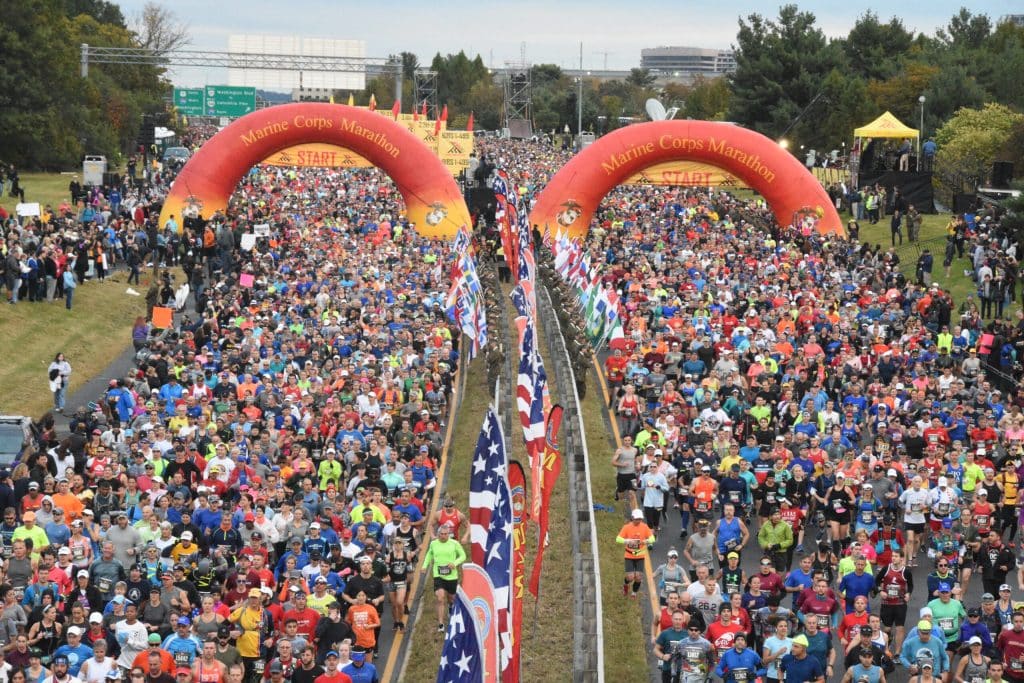
| How do you explain that so many runners in the United States choose your marathon as their first marathon? What actions do you take to welcome these specific runners?
Alex Hetherington: Part of our reputation as the People’s Marathon is being welcoming to first-timers. Every year, at least about a third of our field are running their first marathon, and we’re extremely proud of that. We don’t cater to an elite field, so we can focus our energy on making the race intuitive, navigable, and easy to engage with — providing information and resources that make it accessible and appealing to first-timers.
Our duty as a race organizer is to make the experience easy to navigate and intuitive. Our outreach includes tips and education for first-time marathoners so they’re prepared on race day. The marathon starts months in advance with a smart training plan and a step-by-step buildup to run that 42-kilometer (26.2-mile) distance.
| Last year, there were more than 30,000 participants. What percentage of them were Marines? Do you think Marines enjoy running more than most people? They have high standards, train every day, practice multiple sports, and have abilities that many others don’t.
Alex Hetherington: There’s a strong tradition of Marines participating in the Marine Corps Marathon. First, we have a large group of Marines who support the race in uniform — at water points handing out drinks, motivating runners along the course, and celebrating them. That enthusiasm and support for one another is a key leadership trait for Marines. We work hard, the training is demanding, and one way we get through it is by encouraging each other.
About 35–40% of our field are active-duty or veteran service members, or family members who are out there on race day. The Marine Corps Marathon is a rite of passage — a bucket-list event. For many, it’s life-changing and especially meaningful for veterans because of its affiliation and celebration of service.
But it’s not just Marines. A key part of the event is civilians participating alongside you. It’s a demonstration of unity, shared purpose, and common goals — the unity that defines our nation. We also have many foreign military athletes who run our races, and we welcome that participation.
| Would you say your event is international in terms of participation? Do you welcome athletes from all over the world? What do you do to attract those participants, especially to raise awareness of your event in Europe, knowing that it’s a long trip to get here?
Alex Hetherington: We do some international marketing through partners, but the best marketing is word of mouth from runners. We draw a lot of participation from embassy staffs in Washington, D.C., including foreign military personnel assigned to embassies. They encourage other athletes — including military athletes from their home nations — to participate.
In many cases, athletes travel from those countries to run the Marine Corps Marathon. We have a military team competition within the marathon that’s highly competitive. There’s significant participation from foreign embassies, foreign militaries, and their family members. They come once, and they want to come back.
It’s largely word of mouth that drives international participation. That spirit of friends and allies is an important tradition — a bedrock principle of the United States.
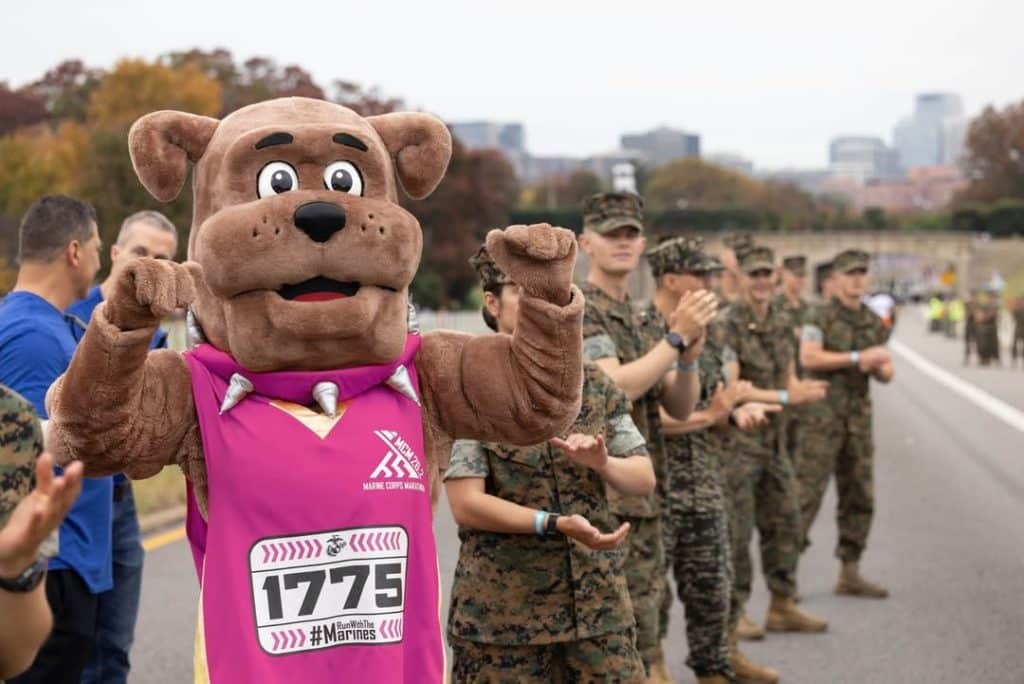
| Today and in the coming years, the number of participants in your event has increased significantly. Do you think you have reached maximum capacity? Is it still possible to welcome more runners, for example by modifying the course? And with the 50th edition approaching, do you already have any special plans, such as adding or removing certain distances, or changing certain aspects of the race?
Alex Hetherington: For the 50th Marine Corps Marathon, we’re focusing on delivering an outstanding marathon and allowing as many people as possible to participate. We’re registering 40,000 runners for the marathon alone — we’ve never registered that many. The most we’d ever registered across three distances in the past was 30,000. The 10K is going virtual and the 50K is paused. So far, we’ve registered over 33,000 runners, and registrations are currently coming in at about a thousand per week, so we expect to reach our goal soon.
We’re also planning many events to celebrate the 50th: our Hall of Fame dinner; a kids’ run on Saturday; a big celebration with the expo on Saturday before the race; a shakeout run featuring key partners and sponsors; and an opening ceremony for our Armed Forces Marathon Championships.
Teams from each of the Armed Forces have come to the Marine Corps Marathon every year since 1998 to compete for top honors as the best Armed Forces team. Last year, the men’s winner was Major Kyle King, United States Marine Corps. He’s won twice; we’re hoping he can make it a three-peat — which would be a first. He’s an extremely talented runner, and we’re excited to welcome him back.
| Do you have a responsibility in terms of social integration and environmental responsibility? What actions do you take in this field to make progress? We are in 2025 and we see that your events inspire smaller events. What concrete actions do you take?
Alex Hetherington: Running is voluntary, and we believe we need to take concrete steps toward sustainability. We have many partners and initiatives to do that. We recycle and compost almost all race-day materials. We donate cast-off clothing through partners so it can be cleaned and reused. Our apparel sponsor, Recover Brands, operates a closed-loop system using recycled materials, and our excess race shirts are also recycled if we can’t place them after race day.
We’ve also improved our forecasting of race needs. I don’t have the metrics in front of me, but we’ve seen year-over-year improvements in sustainability — using resources responsibly, including water. We’re constantly looking for better, more efficient ways to eliminate waste, including travel efficiency. We partner with the city to open the Metro two hours early on marathon Sunday, because that is by far the best way to arrive at and depart from the Marine Corps Marathon. We advocate for mass transit whenever possible.
| Can we say that this half marathon is the “little brother” of the marathon, or is it a completely different event with its own unique spirit?
Alex Hetherington: It’s related. For our staff, it’s an important mission-rehearsal opportunity, especially for new initiatives we want to implement at the marathon. We plan to host 40,000 runners for the marathon. At our most recent Historic Half in Fredericksburg, Virginia, we had 8,000 runners. It lets us practice new methods, integrate new partners, and refine processes.
Fredericksburg is a small but growing city in Virginia. It’s the Marine Corps’ hometown because Quantico is where career Marines spend time — in school or in headquarters roles — at some point in their careers. Many retired Marines live there, so it has a hometown flavor. It’s also a very historic city with a colonial past; George Washington spent his childhood there. That’s why we call it the Historic Half. It’s the largest mass-participation event in Fredericksburg each year. It has a slightly different feel, but it helps us prepare and get organized for the marathon later in the year.
One successful initiative is the Distinguished Participant Challenge, which invites runners to take part in our five event weekends. It’s growing every year. This year, we may have over a thousand people running all five weekends, including the Marine Corps Marathon. That’s how we build a community of very invested athletes who know us, value what we’re doing, and help us grow and shape it the right way.
| As a runner, is there a section of the course that you particularly enjoy? If so, which one is it?
Alex Hetherington: I love the Marine Corps Marathon course because it has so much variety. It’s not a slow course, but it’s not a fast one either. There’s some elevation change early — the second mile is mostly uphill, about 200–300 feet of elevation, which is more than many marathons. There are quite a few turns, but otherwise it’s predominantly flat. People remember that the race finishes on an incline. At the end of a marathon, the last thing you want is to run uphill — even if it makes the finish memorable. I love that it’s accessible without being entirely flat.
The Marine Corps Marathon is essentially a series of five out-and-backs. The Lincoln Memorial really anchors the course. That’s great for first-timers too — friends and family can see you multiple times without moving much. In terms of national monuments, the Lincoln Memorial is the touchstone for me. I think Abraham Lincoln was, in many ways, our greatest president, and his memorial is iconic. Each time you return there, you’re more fatigued — but you know you’re closer to the finish.
| As an organizer, did you run the race officially?
Alex Hetherington: I’ve run it many times — I think 29. I first engaged with the race as a Marine and loved it. I ran on All-Marine teams for 15 years, doing the race almost every year on active duty, and again after I retired. It’s like a mini-reunion every year.
As an organizer, I see people I’ve known for decades, people I haven’t seen in a long time — and they matter because we served together. Many family members run as an act of remembrance for a loved one who was a Marine or another service member who has passed. People come back in memory of those they served with, or as a reunion, and run together. That adds real depth and meaning to the Marine Corps Marathon — and that’s why I love it.
The COVID period was difficult: we had to cancel the race two years in a row. It was hard to rebuild the muscle memory and re-engage people around the race. But in 2025, the race is close to sold out and enthusiasm is stronger than ever. For this 50th edition, I’m eager to celebrate the comeback — bigger and better — while keeping in mind what we’ve learned.
| What is your personal best time for the marathon?
Alex Hetherington: My PR is 2:29 — three times — all in the 1990s. I trained hard and was deeply invested, but I could never go faster. I guess that shows I plateaued as a runner. Two of those sub-2:30s were at the Marine Corps Marathon. I was inspired.
| When you create your race schedule, what are the three races you really want to do — those you appreciate for their organization, spirit, and setting?
Alex Hetherington: I like to try new things, but I’m also a creature of habit. I enjoy events with depth of experience, a distinct culture, and clear values. Each race tells a story about the organization and the participants.
The race that captures my imagination is the Boston Marathon, because it’s one of the oldest organized running events in the world. It’s amazing to be part of — and incredibly competitive because you have to qualify. The start is organized in waves by time, which is exciting. The challenge every year is to see if you can beat your number — your bib number — and run faster than your qualifier.
I dearly love the Annapolis 10-Miler in Maryland. It’s in August and always super hot and humid. It starts and finishes at Navy-Marine Corps Memorial Stadium, part of the U.S. Naval Academy, and it’s hilly. Annapolis is an iconic colonial town with a rich seafaring tradition. I love that race. It’s probably the largest race I ever won personally — a nice tie-in that keeps me coming back, even if my winning time was one of the slowest in event history. The race is also celebrating its 50th anniversary this year.
I also love the Army Ten-Miler. It’s a sister-service race — incredibly fast and highly competitive — with teams from Army bases and ROTC cadets. It includes many adaptive athletes, especially wheelchair veterans. It’s another extremely well-run event. I love it. Those are my top three that I always come back to.
For nearly 50 years, the Marine Corps Marathon has been driven by the same discipline and dedication that define the honor of the Marine Corps. At its helm, a passionate leader carefully oversees every detail, guided by a clear mission: to deliver a deeply human experience. Behind every Marine handing out water and every runner climbing the hill toward the Iwo Jima Memorial, the spirit of the “People’s Marathon” echoes. Here, people run not for prize money or glory, but to be part of something greater than themselves. As it approaches its 50th edition, this iconic race continues to evolve while staying true to its core values: unity, remembrance, and community.
➜ The next edition of the Marine Corps Marathon will take place on Sunday, October 26, 2025. Find out all the details !
